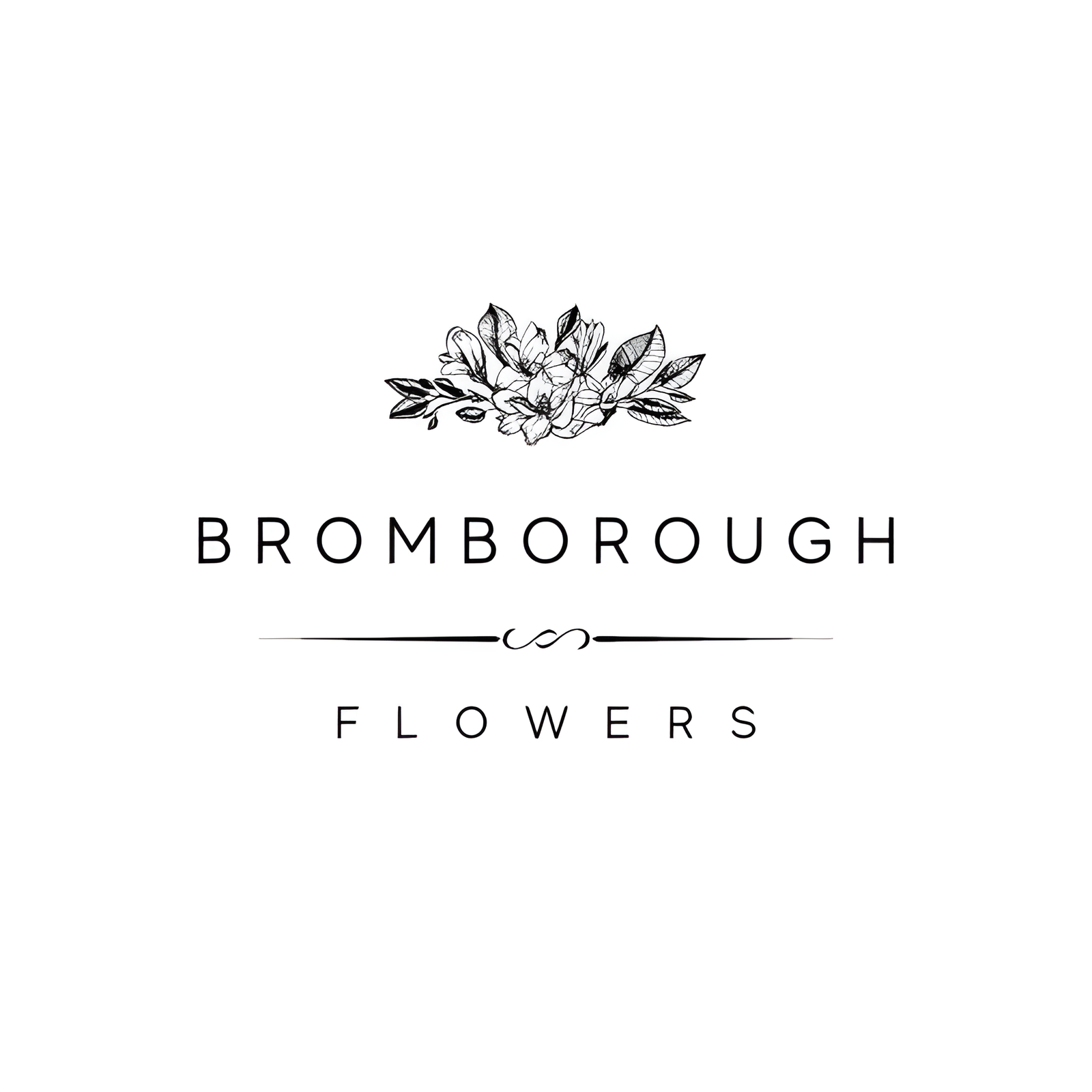Yellow freesias have become a favored choice for wedding floral arrangements, celebrated for their vibrant yellow hue and sweet fragrance that exudes joy and positivity. Known for symbolizing friendship and happiness, these flowers offer a versatile option for bouquets and centerpieces, with each stem reaching 40 cm and lasting over two weeks with proper care. Their cheerful appearance can be further enhanced by combining them with pink freesias, creating a visually stunning and uplifting arrangement. What makes yellow freesias truly unique in the domain of wedding flowers, and how can they be best utilized to enhance the ambiance of your special day?
Flower Overview
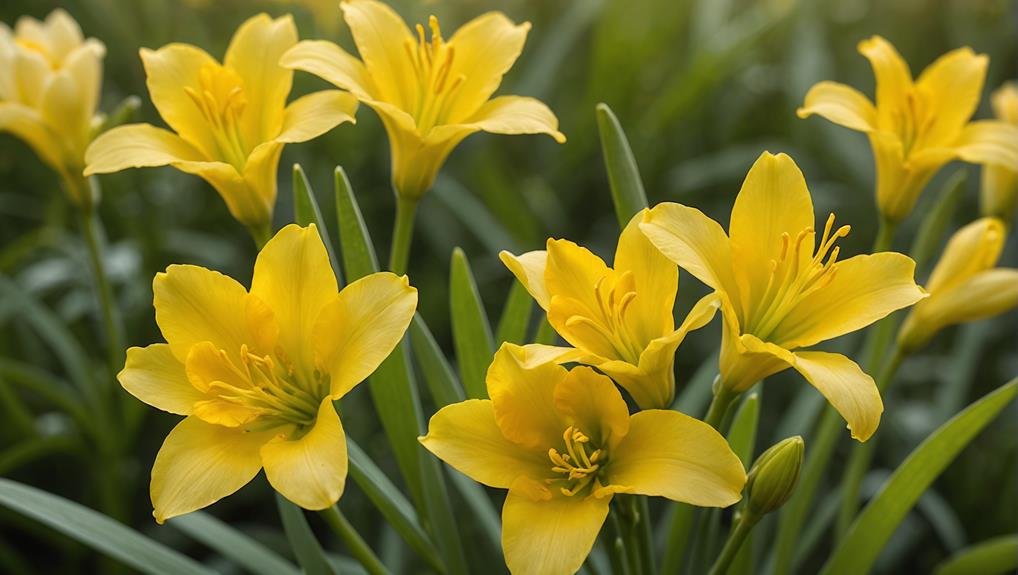
Yellow freesias are recognized for their vibrant hue and pleasant aroma, symbolizing friendship, joy, and positivity. These qualities make them a preferred option for wedding bouquets and centerpieces. Their flexibility in floral designs allows them to harmonize with various themes and styles seamlessly.
When contemplating flower delivery, yellow freesias are typically shipped in boxes containing 200 stems, each measuring 40 centimeters in length. This guarantees that florists have more than enough material to craft stunning arrangements that can illuminate any wedding venue.
Furthermore, in addition to their visual attractiveness, yellow freesias possess a longevity that renders them a pragmatic choice for events. With appropriate hydration, these flowers can endure for more than two weeks, ensuring they stay fresh throughout the wedding celebrations. This resilience also positions them as a cost-effective alternative for brides and event organizers.
Although yellow freesias are particularly renowned for their symbolism and usefulness, they can also be combined with other types, like pink freesias, to produce a varied and visually appealing floral exhibition. The fusion of yellow and pink freesias can further enrich the visual appeal, introducing depth and contrast to the compositions. This flexibility highlights why yellow freesias are a favored option for weddings.
Physical Description
In addition to their symbolic meaning and practical benefits, the physical characteristics of yellow freesias contribute significantly to their popularity in wedding arrangements. These flowers are distinguished by their vibrant yellow hue, which embodies friendship, happiness, and optimism, making them a fitting choice for celebratory occasions.
The stems of yellow freesias are robust, typically extending up to 40 centimeters in length. This remarkable height makes them particularly versatile for floral arrangements, whether they are used in bouquets, centerpieces, or other decorative displays. The flowers themselves are arranged in a graceful, upward-facing pattern on one side of the stem, creating a visually appealing and balanced look.
Yellow freesias are also renowned for their sweet and fresh fragrance, which can enhance the ambiance of any wedding venue. Their aroma is both subtle and inviting, providing an added sensory dimension to their visual appeal. Additionally, with proper hydration, these flowers can last over two weeks, ensuring that their beauty endures throughout the wedding festivities and beyond.
When combined with other flowers such as sunflowers and lavender scabiosa, yellow freesias contribute to stunning floral designs. Their physical attributes make them a standout choice, enriching any wedding setting with their charm and elegance.
Available Colour Varieties
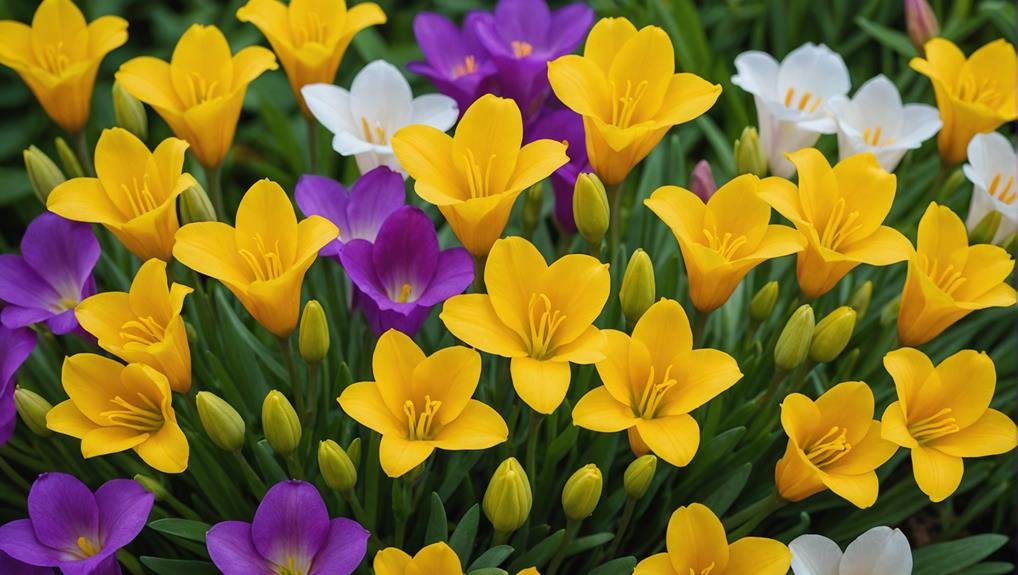
Freesias are available in a wide array of colors, each bringing a unique aesthetic and symbolic value to wedding arrangements. Among these, yellow freesias are particularly notable for their vibrant and cheerful hue. However, the versatility of freesias extends far beyond just yellow.
These flowers come in a range of colors, allowing for a variety of floral designs that cater to different tastes and themes.
Freesias are a popular choice for wedding bouquets and decorations due to their diverse color palette, which includes:
- Pink: Symbolizing grace and sweetness, pink freesias add a soft, romantic touch to any floral arrangement.
- Purple: Known for its regal and elegant appearance, purple freesias can create a sophisticated contrast when paired with yellow.
- White: Representing purity and innocence, white freesias are a timeless addition to wedding decor, complementing almost any color scheme.
Latin Name and Taxonomy
Understanding the botanical aspects of these vibrant flowers begins with examining their Latin name and taxonomy. The Yellow Freesia, scientifically referred to as Freesia refracta, belongs to the Iridaceae family. This elegant flower was named in honor of Friedrich H.T. Freese, a noted German physician and botanist. Taxonomically, Freesia refracta is classified under the order Asparagales and the subfamily Crocoideae.
The genus Freesia encompasses around 14 distinct species, with the Yellow Freesia being a highly popular hybrid variety. Understanding the taxonomy of Freesia refracta not only aids in recognizing its botanical classifications but also provides insights into its unique characteristics and evolutionary lineage.
Below is a table summarizing the key taxonomic details of Yellow Freesia:
| Classification Level | Details |
|---|---|
| Latin Name | Freesia refracta |
| Family | Iridaceae |
| Order | Asparagales |
| Subfamily | Crocoideae |
| Named After | Friedrich H.T. Freese |
| Number of Species | Approximately 14 |
This structured understanding of the Latin name and taxonomy of Yellow Freesia serves as a foundation for delving deeper into its botanical attributes and horticultural significance.
Geographical Origins
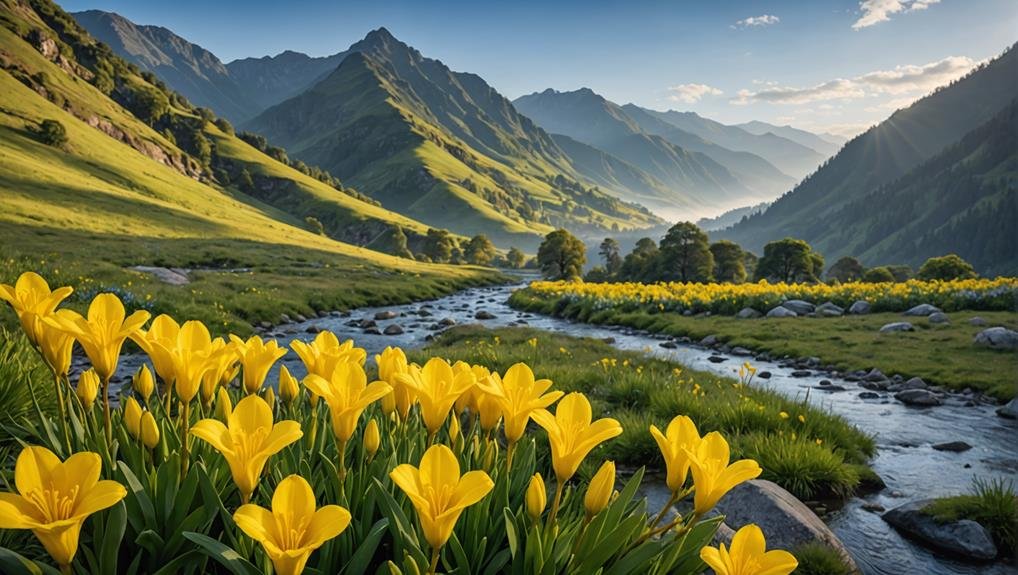
Originating from the diverse and rich landscapes of South Africa, Yellow Freesia thrives in its native habitat before gaining global popularity. This vibrant flower is a proof to the region's botanical diversity, flourishing naturally in the wild.
The history of Yellow Freesia is deeply intertwined with its geographical origins, contributing to its unique characteristics and widespread appeal. The flower was named after Friedrich H.T. Freese, a German botanist, by his colleague Christian P. Ecklon. This naming not only honored Friedrich H.T. Freese but also highlighted the plant's botanical significance.
Over time, Freesias have transcended their South African roots to become a beloved choice in floral arrangements worldwide.
Key points about the geographical origins of Yellow Freesia include:
- Native Habitat: Grows wild in South Africa, benefiting from the region's climate and soil conditions.
- Botanical Discovery: Named by Christian P. Ecklon in honor of Friedrich H.T. Freese.
- Global Cultivation: Now extensively grown in the Netherlands for commercial purposes, making it readily available for various occasions, including weddings.
Understanding the geographical origins of Yellow Freesia provides a deeper appreciation for its beauty and the cultural heritage it represents.
Season Availability
Yellow freesias are renowned for their year-round availability, offering flexibility for wedding planners regardless of the season. Naturally blooming in the spring, these vibrant flowers are a popular choice for spring and summer weddings due to their bright color and fresh fragrance. Their natural blooming season aligns perfectly with the warmer months, providing an abundance of high-quality blooms that enhance any floral arrangement.
Florists can also source yellow freesias from various regions worldwide, ensuring a steady supply throughout the year. By leveraging modern horticultural techniques, they can encourage freesias to bloom even out of their natural season. This allows couples to enjoy the beauty and elegance of yellow freesias in their wedding decor, whether they are tying the knot in the heart of winter or the height of summer.
When planning a wedding, it is essential to take into account the season to guarantee the best quality and availability of yellow freesias. While their year-round availability makes them a versatile option, selecting them during their peak spring and summer months can ensure the freshest and most vibrant blooms, making your special day even more memorable.
Growing Conditions
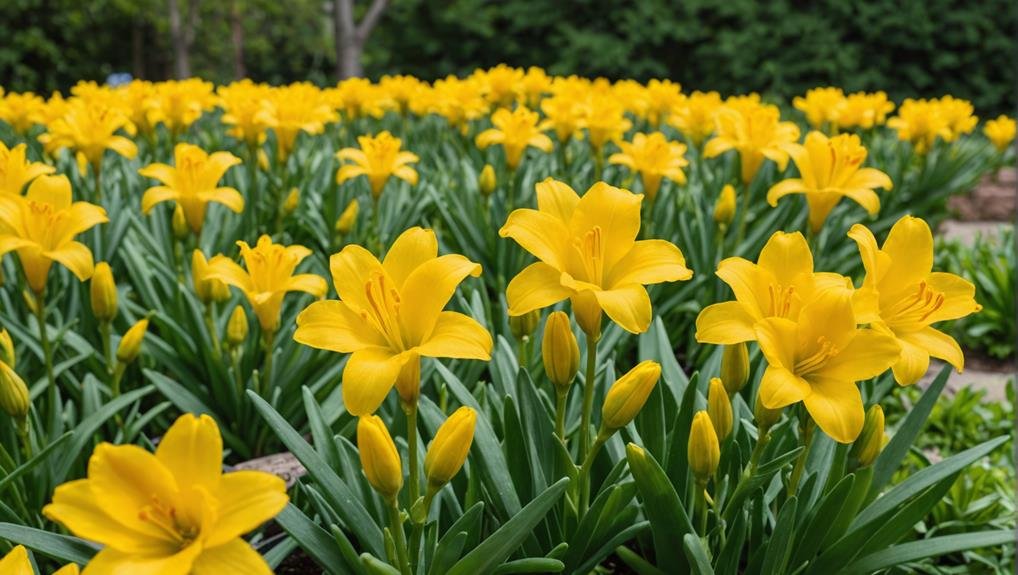
To ensure the year-round availability of yellow freesias, it is essential to understand the specific growing conditions that allow these flowers to thrive. Yellow freesia flowers thrive in well-drained soil and full sun, making them an ideal choice for gardeners and florists alike. Growing from corms, they bloom mainly in the spring season, adding a burst of vibrant color to any setting.
These flowers are particularly suited for container gardening due to their manageable size and adaptability. Additionally, they feature long, slender stems, making them perfect for use in bouquets, a common need in wedding arrangements.
To maintain their best growth, consider the following key conditions:
- Soil: Ensure the soil is well-drained to prevent waterlogging, which can harm the corms.
- Sunlight: Full sun exposure is vital for strong growth and vibrant blooms.
- Watering: Moderate watering is essential, avoiding both drought and overwatering.
Yellow freesias have a vase life of 7-10 days, making them an excellent addition to both home and professional floral displays. Their vibrant color, representing friendship, thoughtfulness, and trust, further solidifies their status as an ideal choice for weddings and other special occasions.
Cultural Significance
Celebrated for their bright hue and fragrant aroma, yellow freesias hold significant cultural value, symbolizing friendship, happiness, and optimism. These qualities make them an excellent choice as a wedding flower, where their presence can convey a sense of joy and harmonious union. The flower symbolism associated with yellow freesias extends beyond mere aesthetics; they represent the positive energy and cheerful moments that couples aspire to in their married life.
In many cultures, the color yellow itself is associated with joy, renewal, and a fresh start, making yellow freesias particularly fitting for wedding bouquets and floral arrangements. Their versatility allows them to pair well with other flowers, enhancing the overall visual appeal and emotional resonance of the floral displays.
Here's a brief overview of the cultural significance of yellow freesias:
| Aspect | Symbolism | Relevance in Weddings |
|---|---|---|
| Friendship | Represents strong connections | Ideal for bridal party bouquets |
| Happiness | Conveys joy and celebration | Perfect for wedding decorations |
| Optimism | Symbolizes hope and positivity | Inspires a hopeful future together |
| Versatility | Complements other flowers | Enhances wedding arrangements |
Understanding the cultural significance of yellow freesias can help couples make thoughtful choices that align with the emotions and values they wish to express on their special day.
Typical Use in Weddings
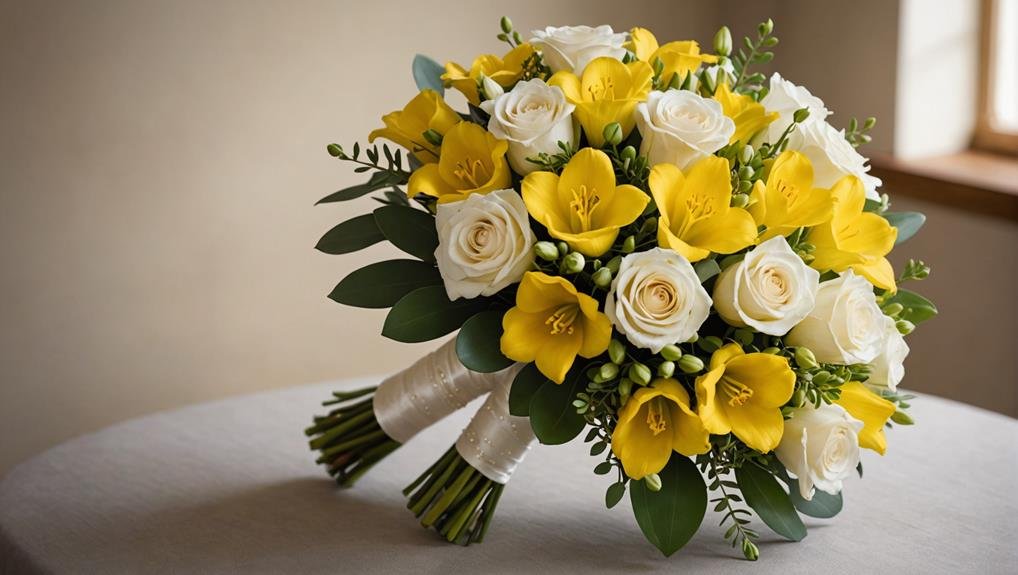
One of the most popular applications of yellow freesias in weddings is their inclusion in bridal bouquets and floral arrangements. Their delicate blooms and vibrant color add a touch of brightness and elegance to any wedding setting. Symbolizing friendship, happiness, and optimism, yellow freesias are a fitting choice for a celebration of love.
In bridal bouquets, yellow freesias often serve as a focal point or accent flower, harmonizing beautifully with other blooms such as white mini callas and lavender scabiosa. Their petite size also makes them ideal for intricate flower crowns, which are popular among brides and bridesmaids seeking a whimsical, natural look.
Additionally, yellow freesias are frequently used in:
- Boutonnieres for grooms and groomsmen, adding a cheerful touch to their attire.
- Table centerpieces, where their long-lasting vibrancy guarantees they remain fresh throughout the event.
- DIY wedding projects, thanks to their manageable size and ease of arrangement.
With proper hydration, yellow freesias can last over two weeks, providing lasting beauty from the ceremony to the final farewell. Their versatility and enduring charm make them a staple in wedding flower arrangements, perfectly embodying the joyous spirit of the occasion.
Alternative Flower Types
While yellow freesias bring a bright and cheerful ambiance to wedding arrangements, several alternative flower types can provide unique touches to suit various themes and preferences.
Sunflowers, for instance, add a vibrant pop of color and are particularly well-suited for rustic or summer-themed weddings. Their large, bold blooms can create stunning focal points in bouquets or centerpieces, exuding warmth and joy.
For couples seeking a more delicate and romantic touch, lavender scabiosa offers an ideal choice. These flowers, with their soft, pastel hues and lacy petals, enhance the overall aesthetic of floral arrangements, adding a sense of whimsy and elegance. They blend seamlessly with other blossoms, including yellow freesias, to create harmonious and visually appealing compositions.
White mini callas, symbolizing purity and elegance, are perfect for classic and sophisticated wedding designs. Their sleek and refined appearance makes them versatile for various arrangements, from bridal bouquets to boutonnieres. Pairing white mini callas with yellow freesias can result in a striking combination, balancing vibrant cheerfulness with understated sophistication.
Incorporating these alternative flower types alongside yellow freesias can result in stunning and diverse floral creations, tailored to meet the unique vision of any wedding celebration.
